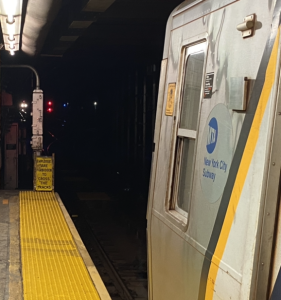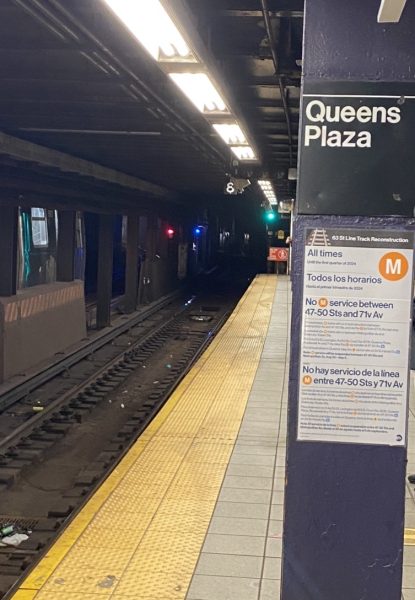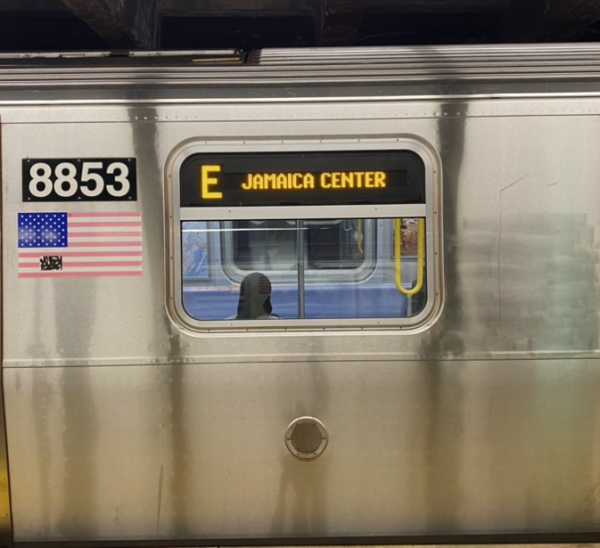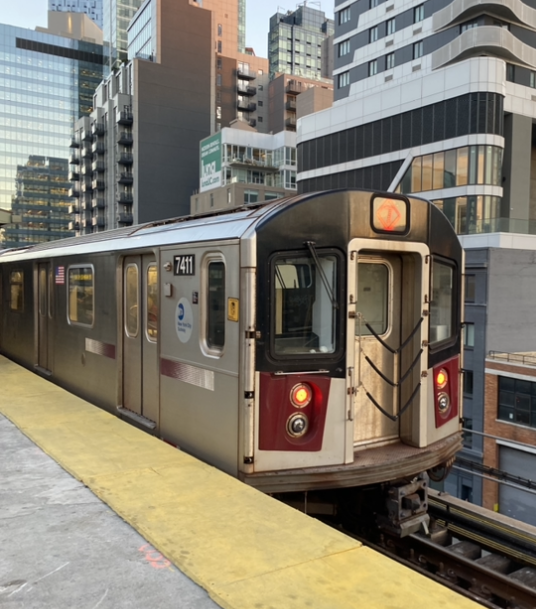The Metropolitan Transit Authority is the largest public transportation agency in the United States, transporting over four million New Yorkers per day to work, school, and more. The agency is announcing massive signal modernization plans across some of the busiest lines on the system.
The current signals used by the MTA, called “fixed-block” signals, are nearly a century old and have malfunctioned countless times over the years.
Fixed-block signals divide tracks into individual sections or blocks. These blocks can vary in length but can be as long as 1,000 feet. When a train occupies one of these blocks, it triggers the two signals behind it to turn red. There must be a minimum of two blocks cleared to ensure a safe distance between trains. However, since each block is quite long, this restricts the number of trains that can run on a particular track at a given time. With a fixed-block system, the MTA cannot determine the precise location of a train, meaning they cannot increase the number of trains running due to safety reasons.
In addition, fixed-block signaling uses a complicated wayside infrastructure, which frequently breaks down. For instance, in July 2019, a massive signal failure along multiple subway lines left many passengers stranded inside crowded trains for over three hours during the first major heat wave of the season.
In addition to the malfunctioning, heavy maintenance, which involves repairs to the signal equipment itself, along with the interlocking equipment (which helps to ensure trains don’t collide with each other, especially when they interline, or share tracks, with each other), requires frequent service changes on late nights and weekends, impacting over three million commuters.
New York’s population has also surged over the last century, further emphasizing the need for higher capacity on the subway, which the MTA’s current signals fail to provide.
To address the issues of fixed-block signaling, the MTA has announced signal modernization plans across some of the system’s oldest and busiest train lines. These projects will install new, more reliable technology, known as CBTC (communications-based train control).
CBTC is a form of automated railway signaling, which has several advantages over fixed-block signals, which include shorter wait times by allowing more trains to run closer together, along with a lesser risk of two trains colliding when close to each other.

CBTC is a form of Automatic Train Operation (ATO), but it is not the only ATO system available. While ATO has been tested as early as the 1920s, lots of developments have been made in recent decades, including Automated Guideway Transit (AGT), which uses a riding or suspension system that physically guides driverless vehicles across a track, and Automated People Mover (APM), which is used mainly for smaller vehicles, such as airport trains. While CBTC may not be the most modern form of ATO available, it’s one of the most convenient and practical systems for heavy rail systems such as the New York City subway system.
I asked an MTA worker, who wishes to remain anonymous, about his knowledge of CBTC and the MTA’s plan regarding it.
“CBTC is communications-based train control,” said the employee. “There are open boxes between the tracks called the transponder. There is a transponder reader at the bottom of the train that reads the transponder, which helps to know its location,” he said.
“There is an OCBU [On Board Control Unit] on every board car unit. The OCBU understands [reads] the transponder to get [the train’s] location and send it to the wayside…Wayside is also known as zone control. Queens Boulevard is split into zones and the zone controller gives a MAL [movement authority limit] which gives [posts] the maximum speed a train can go,” he said.
“The information is sent through radio through wayside radio units (connected with the zone controller, wireless between train antenna and WRU). This lets the OBCU control the train. There are antennas in the tunnels for this reason,” he said.
When asked about his thoughts on CBTC, the worker said, “There are lots of benefits to CBTC, including [it] requiring less equipment to maintain on the field. However, it also has cons, which include [potential] failure of the zone controller, which would lead to an entire zone [area] essentially being shut off,” he explains.
He adds, “Length is important for measurements and localization. Localization is knowing the exact location of the trains. If OBCU fails or something messes with localization, trains can only run at a maximum speed of 10 miles per hour.” This is consequential as this would severely slow down commutes for New Yorkers by causing major delays and congestion along the line.
The MTA has fully installed CBTC on the (L) and (7) lines, which experience some of the highest ridership on the subway, with over half a million daily commuters.
The MTA is in the process of installing CBTC along the IND Queens Boulevard Line, which is one of the busiest lines outside Manhattan. This has resulted in overcrowding, despite the line providing some of the most frequent services on the New York Subway.
As of 2023, Queens Boulevard Express runs a maximum of 33 trains per hour during rush hour (averaging one train every 1.8 minutes) while Queens Boulevard Local runs a maximum of close to 16 trains per hour (averaging one train every 3.8 minutes). This has resulted in frequent congestion along the line, leading to delays, further emphasizing the need for signals that provide higher capacity.

(Maheen Alam)
The MTA has also begun CBTC installation along the IND Eighth Avenue Line and the IND Culver Line, two major subway lines located in Manhattan and Brooklyn. The IND Crosstown Line is also slated to receive CBTC, with installations expected to start around 2027.
This is an ambitious project for the MTA, and it comes with a large price tag. The total estimated cost for CBTC installation along IND Queens Boulevard alone is over $900 million.
CBTC installation along the IRT Flushing Line also has a hefty price tag, with the MTA selecting Thales, a French multinational company that designs and creates electrical systems, especially for transit, for a $343 million contract to set up CBTC along the line.
In addition, the MTA spent hundreds of millions of dollars on the signals, track infrastructure, and new CBTC-compatible rolling stock (train models) for the lines receiving CBTC. In total, the MTA is expected to spend billions of dollars installing CBTC across multiple lines, making it one of the most expensive projects in the agency’s history.
In addition to the price of this project, CBTC installation will likely take decades to complete. The first train line to fully receive CBTC was the (L) in 2009, with the (7) receiving it a full 10 years later. CBTC installation on Queens Boulevard, which officially began in 2017, is expected to be fully completed by 2026.
In addition, the MTA is eyeing further expansion of this signaling system, including on the IRT Lexington Avenue Line, the IND Sixth Avenue Line, and more, which is expected to take at least a few more decades for this expansion to take place.
The installation of CBTC is not an easy task, both for commuters and for workers. Frequent service changes overnights and weekdays have led to increased travel time for riders. For example, until at least 2024, (R) trains will be short-turned to Queens Plaza instead of Forest Hills every night starting at 9:30 pm. In addition, (E) and (F) trains have been running local every night for the time being.
Additional service changes include (F) trains being suspended between Church Avenue and Coney Island-Stillwell Avenue, IND Eighth Avenue trains being rerouted via the (F) into Brooklyn, local trains being rerouted to run express and vice versa, etc. All of these changes have resulted in frustration among New Yorkers commuting overnight and on weekends to work and other places.
While CBTC is much more modern compared to the current fixed-block signaling, it’s not exactly the newest railroad signaling system. In February 2003, Bombardier opened the world’s first radio-based CBTC system on San Francisco Airport’s automated people mover (APM), also known as the AirTrain; however, while radio-based CBTC was officially used in 2003, it was introduced in the 1960s. The first rail line to use CBTC technology was London’s Victoria Line on September 1st, 1968. At the time, the Victoria Line used track loops to determine the location of trains, though radio started being used in the 2000s. By 1985, Alcatel SEL (now Thales) developed CBTC technology on the Bombardier Automated Rapid Transit (ART) systems in Canada using loop-based systems.
With the discussion on the CBTC project continuing, I asked Bronx Science students about their commutes, experiences riding the subway, and thoughts on the project. Their responses were mixed. While many overall approve of the MTA’s investment into CBTC, they also believe the MTA should focus on other aspects of the subway to improve their service, safety, and cleanliness.
“The signals most likely do help, but I honestly haven’t really noticed it on the (7),” said Asahi Ono ’25, a frequent rider of the (4), (7), and (Q) trains. “It would be better in my opinion if they had set arrival times like the JR (Japanese Railway, the most common train lines used in Japan) does. I’d much rather they invest in accessibility for stations (escalators, elevators, bigger platforms in general) and sanitation.”
“The MTA’s investment into CBTC is certainly a great thing, but I think there needs to be some restructuring to truly take the system into its potential,” said David Lin ‘25.
“Right now, you have multiple different lines sharing tracks throughout the system. Some examples include: the (E) and (F) in Queens, the (N) and (Q) in Manhattan, and the (4) and (5) in Manhattan and Brooklyn. This is called interlining, and is actually quite rare in other transit systems around the world,” he said.

(Maheen Alam)
“However, this means that if an incident happened on one track (or one train line), it can spread and cause delays to a lot more trains, regardless of CBTC. Also, trains need to often be held at stations to allow another train to go in front of it.” He explained, “If you’ve taken the (4) downtown, you’ll probably notice that sometimes, the train is held at 161st Street-Yankee Stadium for a minute or so. This is due to a (5) sharing tracks with the (4) up ahead, and the (5) gets priority, slowing down (4) train riders. Overall, CBTC is a great thing, but the MTA should consider detangling (de-interlining) their trains so we can have maximum service with minimal disruptions.”
De-interlining is another proposal championed by many to help improve the frequency of trains and minimize delays and service changes. While interlining has its advantages, including its ability to minimize transfers and provide service to a greater portion of the city, there can also be delays, causing a rapid spread to a large portion of the subway as multiple train lines have to share the same track.
“The MTA should work on better time performance, better headways on trains with more than 5-minute waits, and just making transfers nicer,” said Shadman Syed ’25. “It should also try to make subways safer, but that is a problem that is only partially within its jurisdiction.”
While CBTC has been fully installed in only two subway lines so far, for the four million New Yorkers who ride the subway every day, this has been a major improvement. As the MTA continues to install these new signals, the agency hopes to continue to improve service and capacity for the growing number of subway riders and mark a new era for the New York City subway.
As the MTA continues to install these new signals, the agency hopes to continue to improve service and capacity for the growing number of subway riders and mark a new era for the New York City subway.

